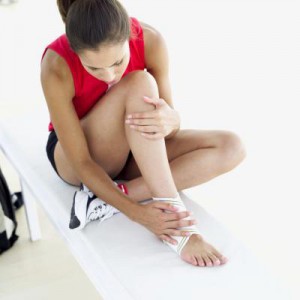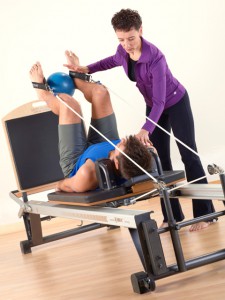According to the Bureau of Labor Statistics, tendonitis causes more than 70,000 people to miss work per year. This is just one of many reasons why it is important to understand the symptoms of tendonitis so that you can avoid not only the pain but the inconvenience it...
LATEST BLOGS
Husband and Wife of 54 Years Undergo Joint Replacement Surgeries On The Same Day
Premier Orthopaedics surgeon, Dr. Jonathan Garino, performed back-to-back procedures on a couple who have been married for 54 years! They shared their same-day surgery journey at the MUVE Center with @6ABC. Watch the incredible story below. Read the full ABC6 story...
What are Non-Surgical Treatment Options for a Herniated Disc
The spine consists of 26 bones called vertebrae and between them are cushion-like pads called “intervertebral discs”. The discs serve as shock absorbers for the vertebrae and help provide stability to the spine. When one of these intervertebral discs loses its normal...
How Athletes can Prevent Foot and Ankle Stress

Athletes are susceptible to injury from the physical contact that they endure and even activities as simple as running and striking the ground. While some injuries are unavoidable, there are precautions that athletes can take to decrease the risk of injury.
Follow these tips, and you’ll reduce the number of injuries you deal with so you can be a stronger athlete in the long run.
Ankle Protection
There are many options for protecting your ankles while you’re participating sports. Some sports don’t allow certain padding to be worn, but in most sports, such as soccer, ankle guards are legal. Some shin guards even come with ankle guards attached. If you get kicked in the ankle, it probably won’t cause an injury like it would without the guard.
Treat Injuries
While it may be inconvenient for you to sit out for a few games due to an injury, it’s important that you spend the appropriate amount of time recovering so your injury can heal. It’s common for athletes to reinjure themselves because they want to get back in the game too soon. Be sure to allow your injury to heal and don’t rush it because that will only result in a painful re-injury.
It’s also important to remember that if you’re experiencing pain, you should see a doctor to evaluate your condition. If you ignore an injury, it will get worse.
Wear the Right Shoes
Shoes (or cleats) play a big part in protecting your feet and ankles from injury, but they can also cause injuries. Make sure you’re wearing shoes that fit appropriately but still leave your toes some wiggle room. Shoes that don’t fit properly can cause pain in the feet, ankles, legs, hips, and spine.
It’s also important that your shoes provide your feet and ankles with stability and support, which means that it’s necessary to replace your shoes when they wear out. You may think that your old cleats are lucky, but the truth is that they aren’t supporting your feet like you need them to.
When buying a new pair of shoes, look for a ½ inch of space between your longest toe and the tip of the shoe, and a padded insole that supports your arch.
First Aid
If you notice any minor cuts or abrasions on your feet, make sure to treat them properly. Use antibacterial cream and apply a dressing to prevent infection from occurring. Though they are minor, these cuts could lead to more serious injuries if they get infected so be sure to take proper care.
Foot and Ankle Conditioning
Performing regular foot and ankle stretches and exercise will build strength while also promoting flexibility. Gentle, repetitive exercises will also provide stability to your joint, reduce muscle soreness, and increase range of motion. Create a conditioning plan to follow that includes these movements to improve your health and prevent injuries.
Discuss with your physical therapist or doctor what kinds of exercises will be the most beneficial.
No athlete wants to be sidelined, so take these precautions to reduce the risk of injury. Take care of your feet and ankles and address any pain or issues you experience at the first symptom.
For more information about injury prevention, click here to download our e-book, The Athlete’s Guide to Reaching Peak Sports Performance and Preventing Injury. This educational guide will help you understand common sports injuries, treatment methods and how to maintain fitness after an injury.


